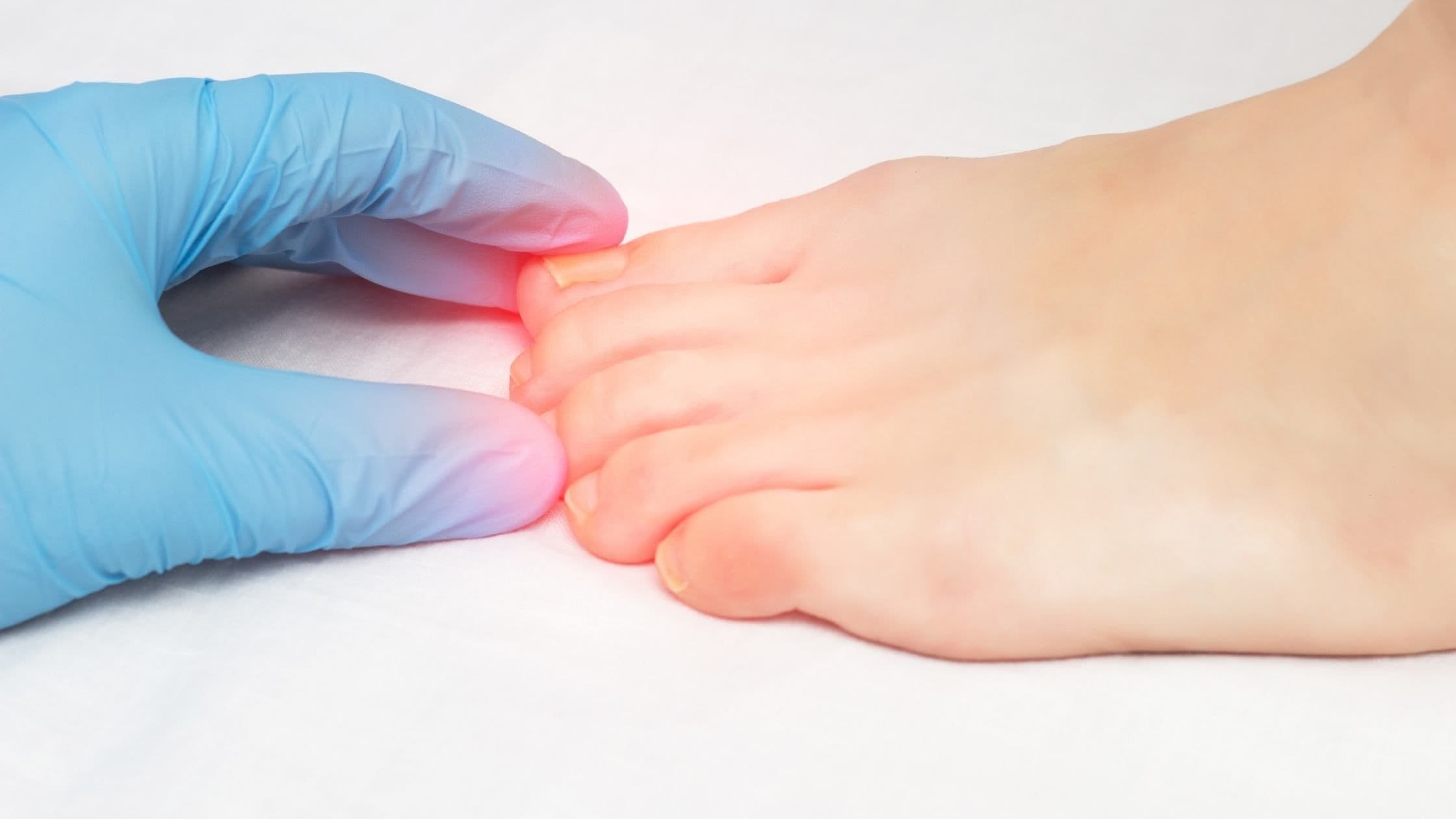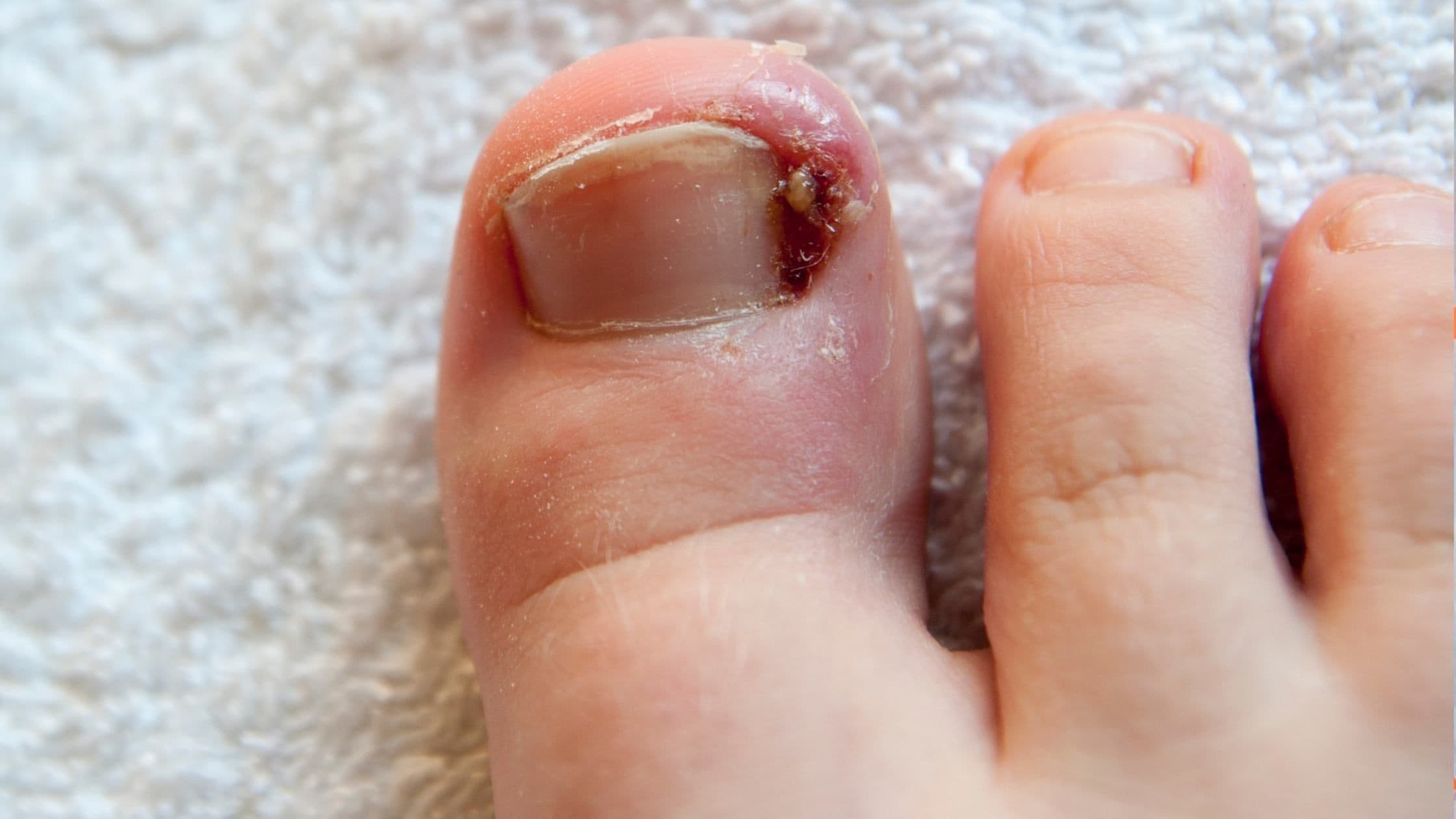Ingrown Toenail: Unveiling the Ouch and Finding Relief
An ingrown toenail, a common foot woe, occurs when the corner or edge of a toenail digs into the surrounding skin, causing pain, inflammation, and sometimes infection. While not life-threatening, ingrown toenails can be disruptive and uncomfortable. This guide delves into the world of ingrown toenails, exploring the causes, symptoms, diagnosis, and treatment options to help you find relief from this unwelcome visitor.

The Culprits Behind the Dig: Understanding What Causes Ingrown Toenails
Several factors can contribute to the development of an ingrown toenail:
- Improper Toenail Trimming: Cutting toenails too short, especially at the corners, can encourage the nail to grow into the skin.
- Trauma: Stubbing your toe, dropping something heavy on it, or repetitive pressure from tight shoes can damage the nail and increase the risk of ingrowth.
- Inherited Toenail Shape: Some people naturally have curved or thick toenails that are more prone to becoming ingrown.
- Sweat and Moisture: A moist environment in shoes can soften the skin and make it easier for the nail to dig in.
- Ill-fitting Shoes: Shoes that are too tight or too narrow can crowd the toes and put pressure on the nail, promoting ingrowth.
Feeling the Pinch: Recognizing the Symptoms of an Ingrown Toenail
The telltale signs of an ingrown toenail can't be missed:
- Pain: A dull ache or sharp pain at the edge of the toe, especially when applying pressure or wearing shoes.
- Redness and Swelling: The skin around the ingrown nail becomes red, swollen, and tender to the touch.
- Drainage: In some cases, pus might drain from the inflamed area, indicating a possible infection.
Diagnosis: Unveiling the Ingrown Culprit
In most cases, diagnosing an ingrown toenail is straightforward. Your doctor will likely be able to diagnose it simply by examining your toe. They will look for the visible signs of ingrowth mentioned above. X-rays are rarely needed for ingrown toenails.
However, if the symptoms are severe or there's a concern about infection, your doctor might recommend additional tests to rule out other conditions, such as a fungal infection of the nail.

Finding Relief: Treatment Options for Ingrown Toenails
The good news is that ingrown toenails are treatable. Here's a breakdown of the treatment options available:
- Home Care: For mild cases, home care measures like soaking the toe in warm water, applying antibiotic ointment, and wearing loose-fitting shoes can help reduce inflammation and encourage the nail to grow out properly.
- Conservative Trimming: Your doctor might carefully trim the ingrown portion of the nail to relieve pressure and promote proper growth.
- Partial Nail Removal: In some cases, if conservative trimming isn't effective or the ingrown portion is significant, your doctor might recommend removing a small part of the nail edge.
- Matrixectomy: For recurrent ingrown toenails, a procedure called a matrixectomy might be considered. This involves removing a small portion of the tissue that produces the nail edge, reducing the risk of future ingrowth.
Preventing the Recurrence: Keeping Ingrown Toenails at Bay
Following these tips can help prevent ingrown toenails from returning:
- Proper Toenail Trimming: Cut your toenails straight across, avoiding rounding the corners. Don't cut them too short.
- Wear Well-Fitting Shoes: Choose shoes that provide ample space for your toes and avoid shoes that are too tight or pointed.
- Maintain Good Foot Hygiene: Wash your feet daily and dry them thoroughly, especially between the toes.
If you experience any signs or symptoms of an ingrown toenail, don't hesitate to seek professional medical attention. Early diagnosis and treatment can help prevent complications and ensure a speedy recovery.